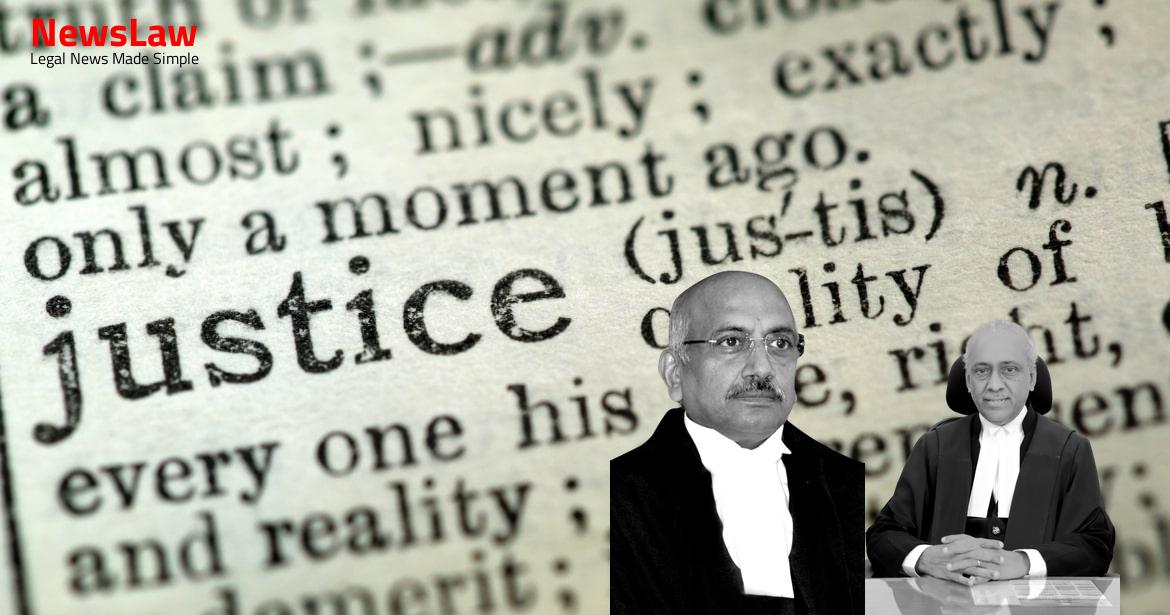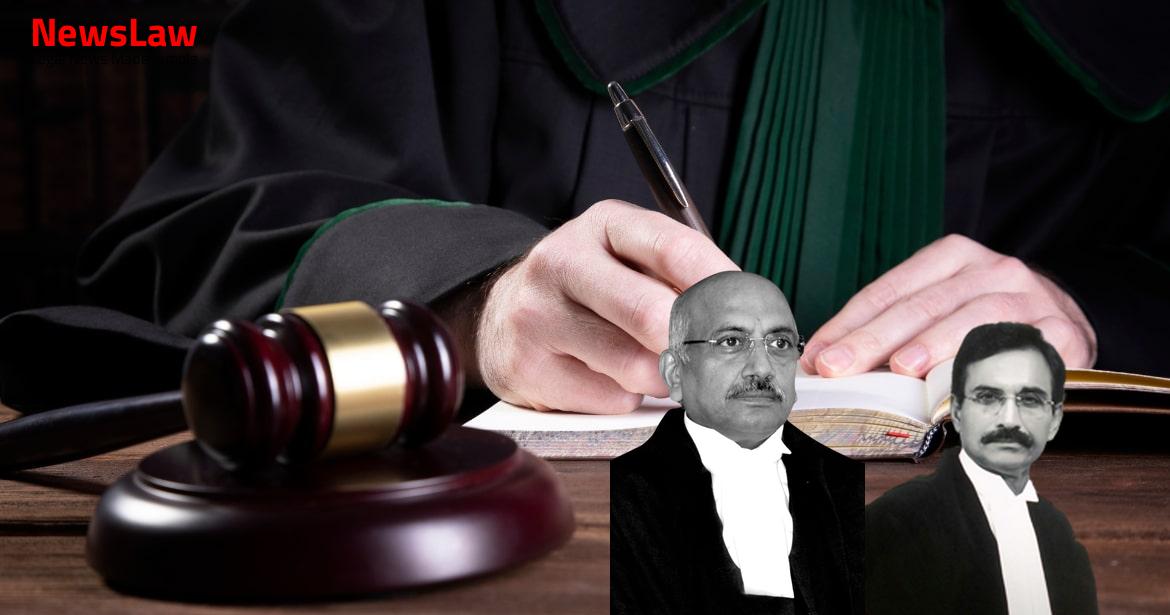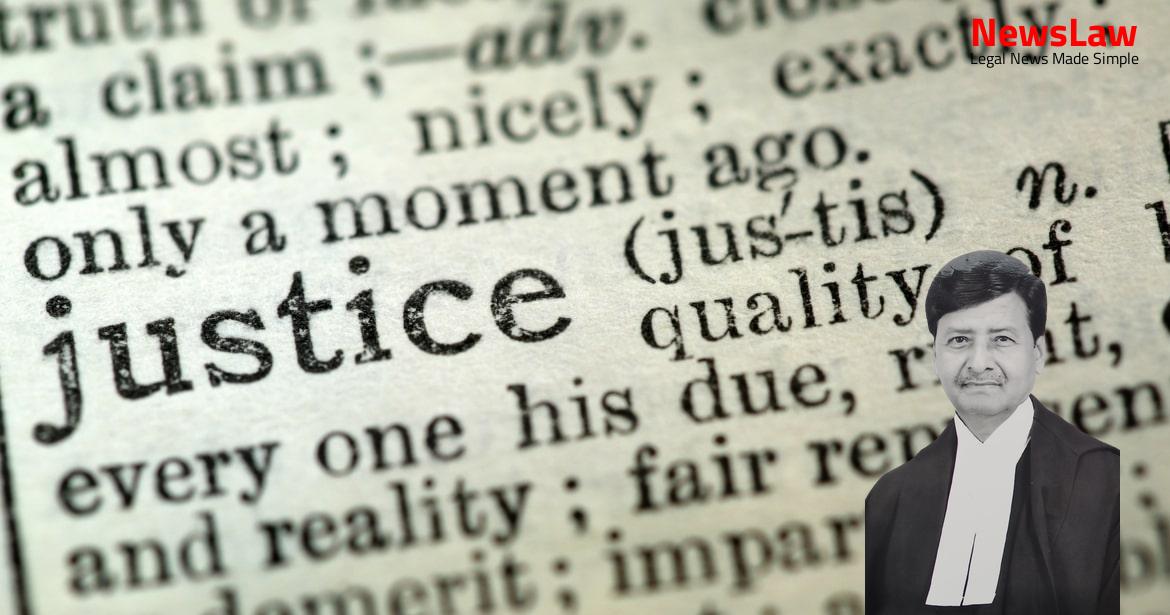Delve into the intricacies of interest calculation in motor accident compensation cases with a focus on the court’s legal analysis. Understand the nuances of the applicable interest rate, period, and formula used for calculating interest on the amounts involved. Explore the crucial factors considered by the High Court in determining fair and just compensation. Discover how accurate interest calculations play a pivotal role in ensuring justice and equitable outcomes in legal cases.
Facts
- The specific part (FAC) of the judgment focused on the calculation of interest.
- The judgment outlined the applicable interest rate and the period for which interest is to be calculated.
- It detailed the formula or method to be used for the calculation of interest on the amounts involved.
- The judgment emphasized the importance of accurately calculating interest to ensure fair and just compensation.
- It highlighted any specific considerations or factors that may impact the calculation of interest in this case.
- The High Court of Uttarakhand allowed the appeal and set aside the judgment of the Motor Accident Claims Tribunal (MACT).
- The insurance company denied the deceased was a pillion rider and claimed he was driving the vehicle, which impacted the case.
- The absence of the claimant at the scene and failure to call a crucial eyewitness led to the dismissal of the petition under Section 163A of the Motor Vehicles Act.
- The High Court noted the absence of evidence showing the deceased had a valid driving license.
- Arguments were presented regarding the ‘no fault’ liability under Section 163A and the calculation of the multiplier for compensation.
Also Read: Legal Analysis on Physical Ability in Rape Case
Arguments
- Shri Anshum Jain, representing the insurance company, supported the High Court’s judgment
- He argued that no-fault liability under Section 163A is limited to Rs.1 lakh
- Even if the MACT judgment is upheld, the maximum award possible in this case is Rs.1 lakh
Also Read: Legal Analysis on Admissions and Document Consideration in Insolvency Case
Analysis
- The MACT order stated that the insured person did not need to be the driver of the vehicle, but could have been a passenger, as long as the accident resulted in the death of the person driving the vehicle.
- The lack of evidence or cross-examination from the opposite parties regarding the deceased being the driver at the time of the accident, or possessing a valid driver’s license, favored the claimants.
- The MACT highlighted that in a Section 163A petition, claimants are not required to prove the negligence of the owner or driver, making the insurer liable for compensation.
- The Tribunal did not focus on issues related to the validity of driving licenses for the deceased and OP No. 1, as these were not pressed during arguments by the opposite parties.
- The calculation of compensation was based on an assumed income, with adjustments for age and income multipliers.
- The judgement of the High Court favored the insurance company, claiming that the claimant, not being an eyewitness, could not provide evidence of the accident, potentially leading to the dismissal of the Section 163A petition.
- Owner of motor vehicle or authorised insurer liable to pay compensation in case of death or permanent disablement due to accident
- Compensation amount indicated in Second Schedule to be paid to legal heirs or victim
- Definition of ‘permanent disability’ to be same as in Workmen’s Compensation Act, 1923
- Claimant not required to establish wrongful act or neglect in claim for compensation
- Central Government can amend Second Schedule by notification in Official Gazette
- MACT’s judgment would have been restored but for a glaring mistake in the multiplier pointed out by Shri Sahoo.
- The argument regarding maximum liability of Rs.1 lakh was not raised in lower courts and cannot be raised for the first time at this stage before the Supreme Court.
- High Court was wrong in stating that under Section 163A, it was necessary to prove that someone else was driving the vehicle rashly and negligently for the victim’s death to occur.
- Insurance company gave up the driving license aspect of the case before MACT but the High Court used it to deny relief to the claimant.
- High Court’s decision based on the driving license aspect was incorrect.
Also Read: Analysis of Transfer of Winding Up Proceedings to NCLT
Decision
- The appeal has been allowed with the correction that the multiplier is now 17 instead of 8.
- The amount to be paid will be as per the MACT’s judgment.
- The insurance company is directed to pay the amount due to the claimant within three months from today.
- The interest figure remains the same.
Case Title: CHANDRAKANTA TIWARI Vs. NEW INDIA ASSURANCE COMPANY (2020 INSC 419)
Case Number: C.A. No.-002527-002527 / 2020



